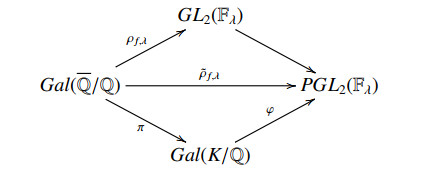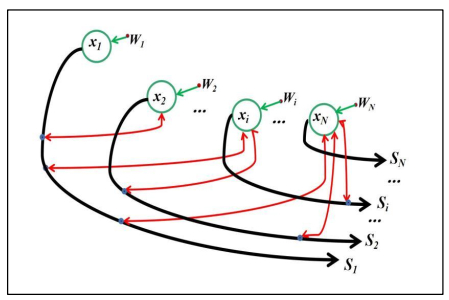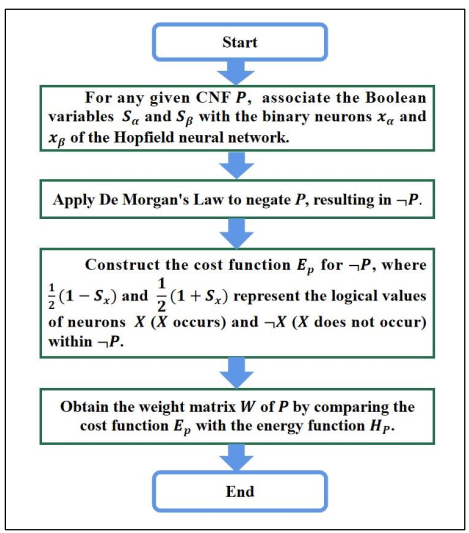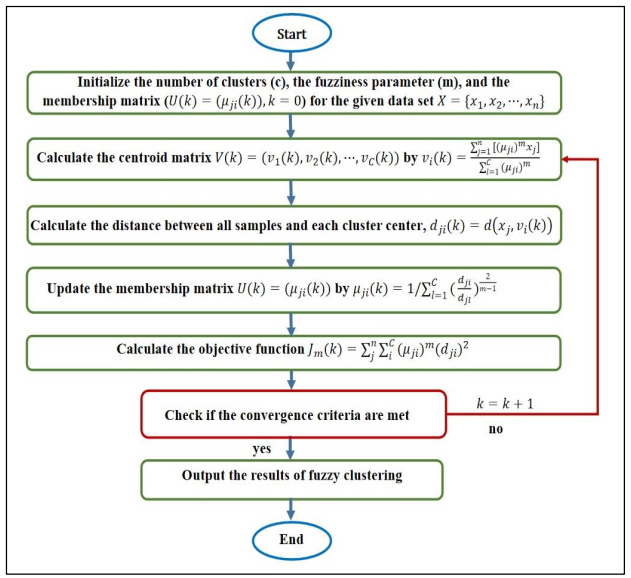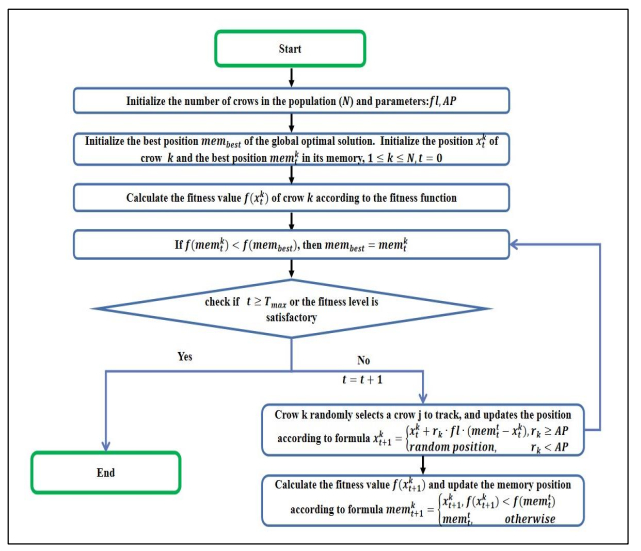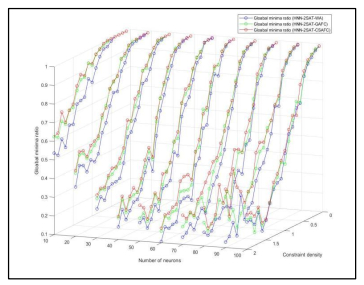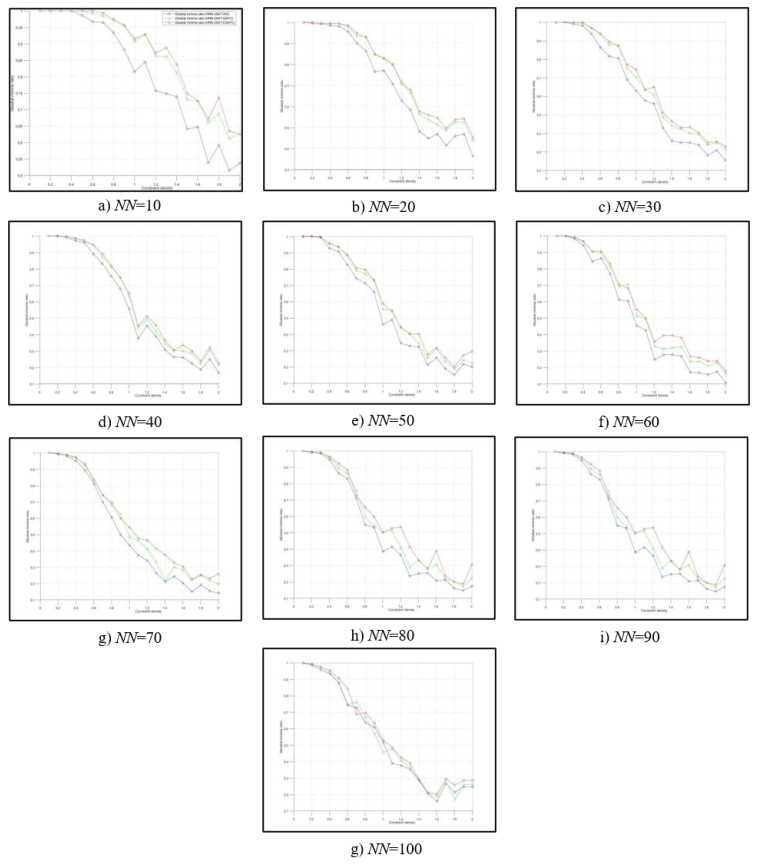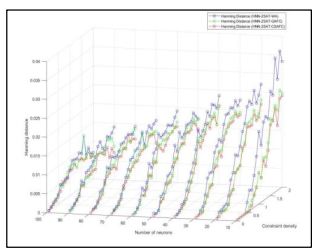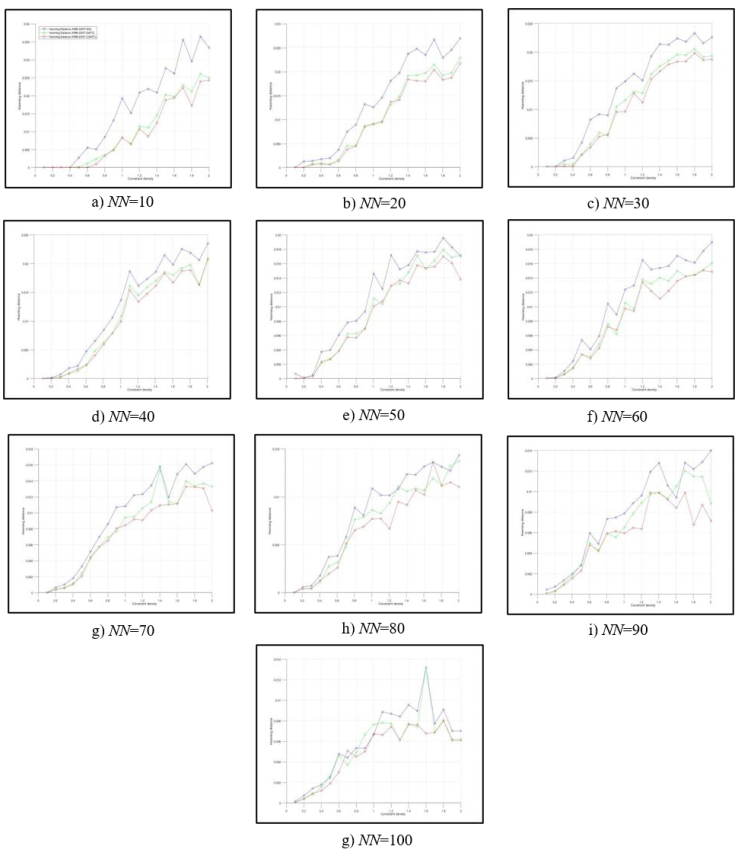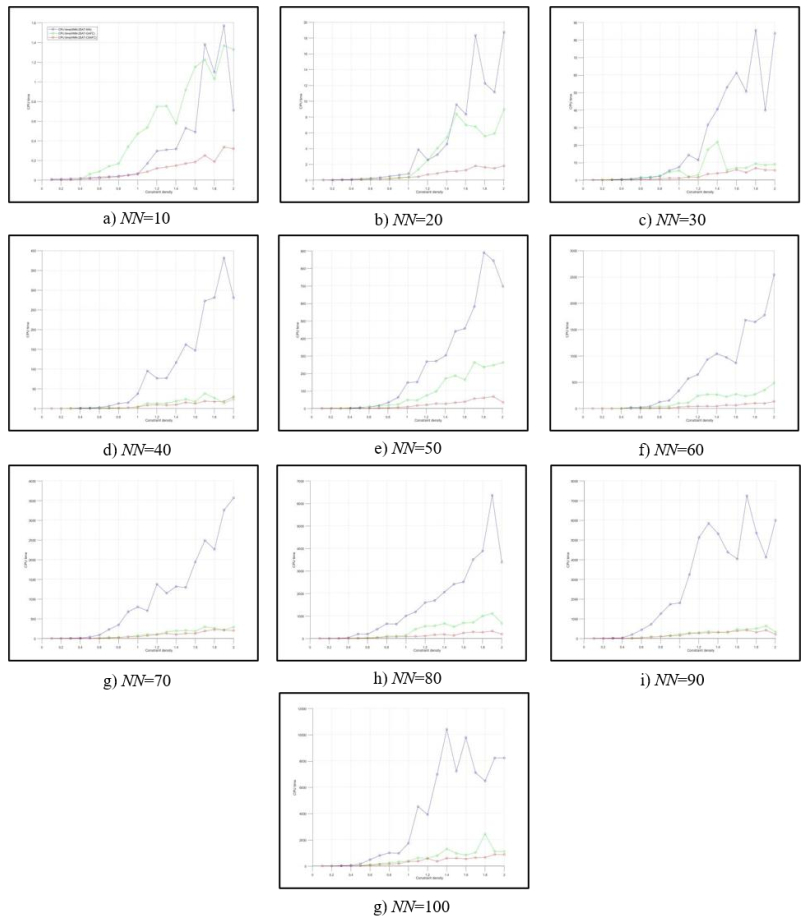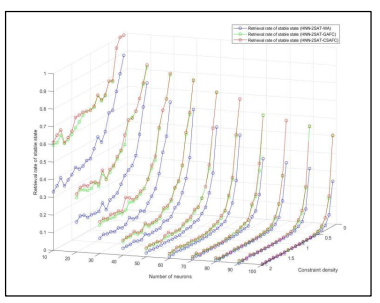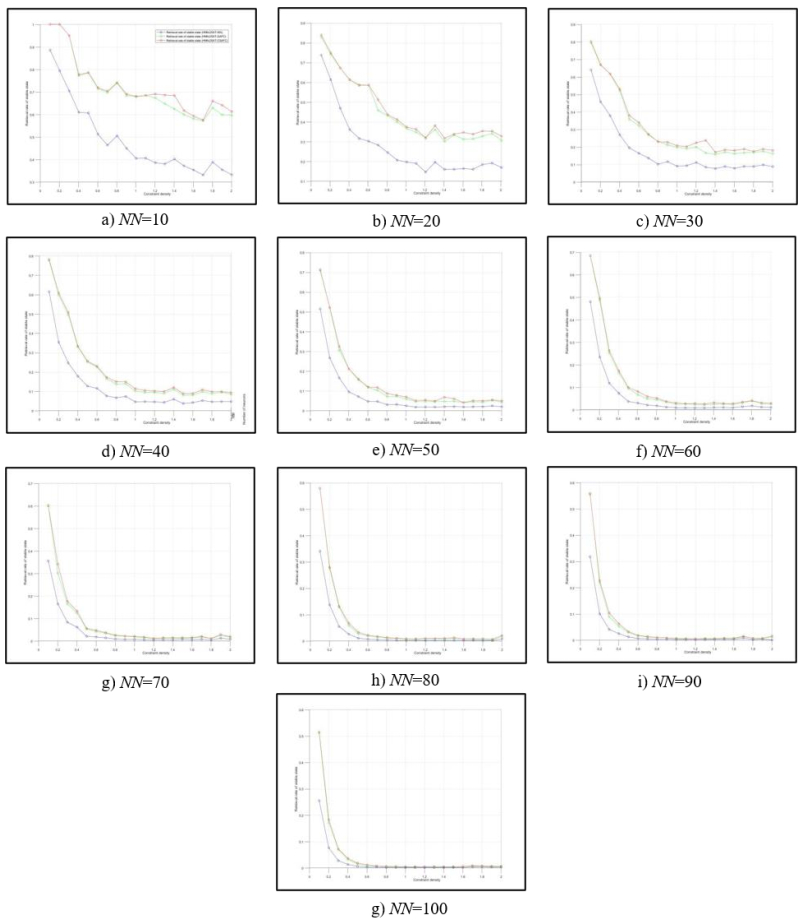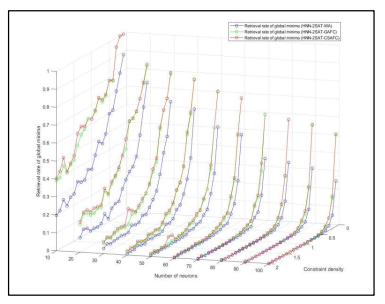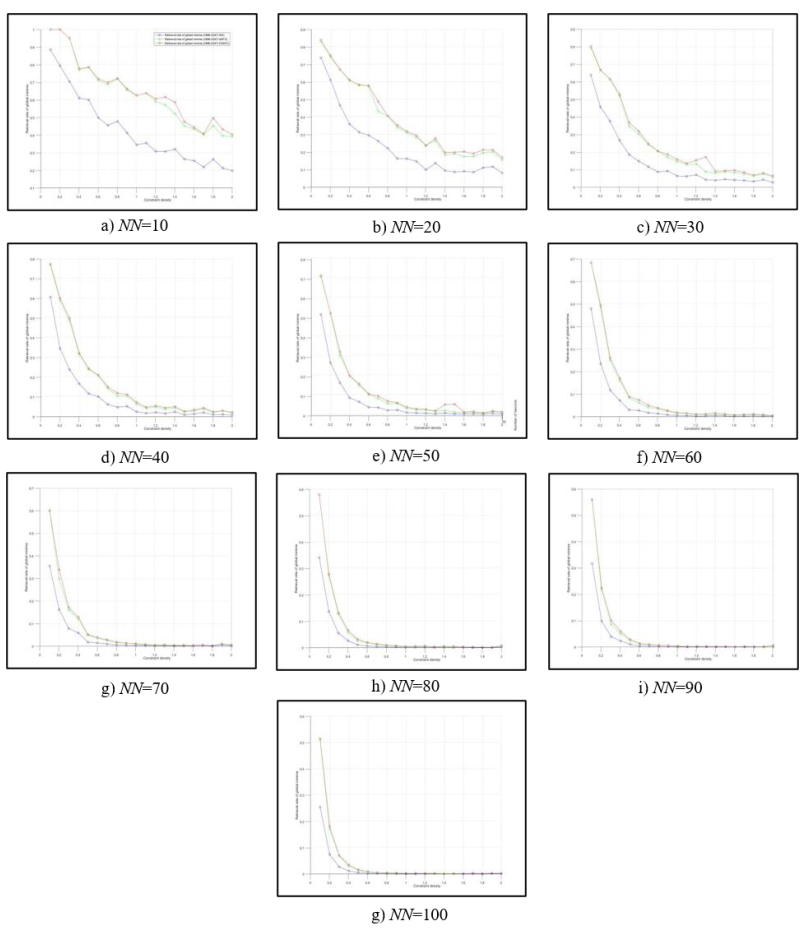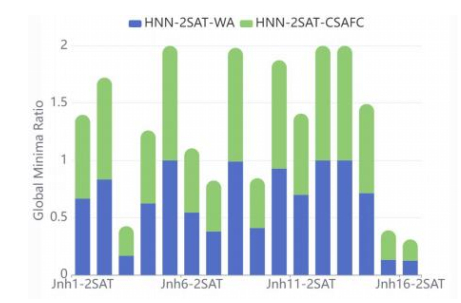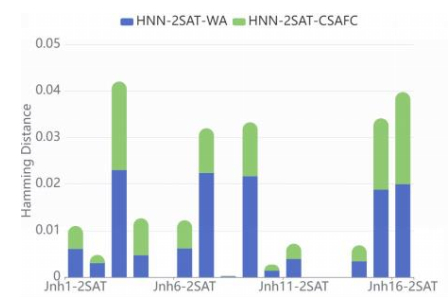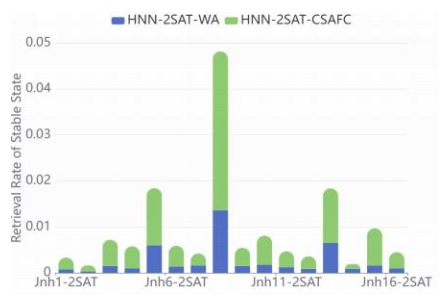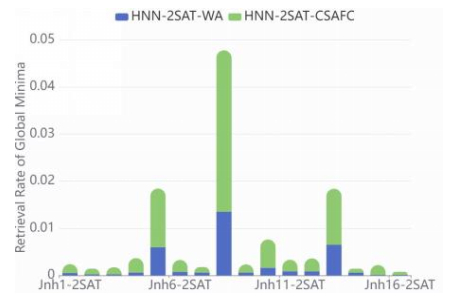1.
Introduction
Let ℓ be a prime number and f∈Sk(Γ1(N)) be a cusp form of weight k and level N. Let ρf:Gal(¯Q/Q)→GL2(¯Fℓ) be a mod ℓ Galois representation associated to f. Let L be the fixed field of the kernel of ρf. Then the representation ρf factors through as:
where π is the canonical restriction map and ϕ is the isomorphism between Gal(L/Q) and the image im(ρf) of ρf. Thus to compute ρf, it suffices to give the Galois extension field L over Q and the isomorphism ϕ.
In their book [1], Edixhoven et al. propose a polynomial time algorithm to compute ρf associated to level one modular forms. They prove that ρf can be described by a certain polynomial Pf∈Q[x] of degree ℓ2−1 whose splitting field is the fixed field L of ker(ρf). One can obtain L by adjoining the roots of Pf to Q, and the isomorphism ϕ is induced by a bijection between the roots of Pf and a 2-dimensional subspace of the ℓ-torsion of the Jacobian variety J1(ℓ) of the modular curve X1(ℓ) associated to Γ1(ℓ). This algorithm has been generalized to modular forms of arbitrary levels by Bruin [2]. Likewise, the associated projective representation ˜ρf:Gal(¯Q/Q)→PGL2(¯Fℓ) can be described by a suitable polynomial ˜Pf∈Q[x] of degree ℓ+1.
The computations depend heavily on ℓ and the genus of the modular curve X1(ℓ), which is equal to (ℓ−5)(ℓ−7)/24. In practice, the most time-consuming part of the algorithm is to approximate the points of J1(ℓ), and the precision significantly increases when ℓ grows. Consequently, the explicit computations have been done only for the primes no bigger than 43.
Let Δk be the unique cusp form of level 1 and weight k with k=12,16,18,20,22,26. In practice, this algorithm has been first implemented by Bosman [1,Chapter 7] to evaluate the projective polynomial ˜PΔk for ℓ≤23 and k≤ℓ+1. In [3,4] and the unpublished paper [5], this algorithm has been improved and more polynomials ˜PΔk have been explicitly computed for ℓ≤43.
However, as far as we know, no one has implemented the algorithm to calculate the polynomials for the cases with ℓ<k−1. In this paper, we shall discuss the algorithms for computing mod ℓ Galois representations associated to modular forms of weight k when ℓ<k−1. We will propose an algorithm of this case and then do explicit computations of the mod ℓ projective Galois representations ˜ρΔk for k=16,20,22,26 and all the unexceptional primes ℓ for which ℓ<k−1.
In the book [1], the authors deal with the case with ℓ<k−1 by twisting the representations and then reduce the computations to the cases with k≤ℓ+1. In fact, for a form of level one and weight k with ℓ<k−1, in [1,Proposition 2.5.18] they show a method to obtain a form of weight k′≤ℓ+1, such that the two Galois representations associated to the two forms are isomorphic. In this paper, we will prove this result also holds for modular forms of levels greater than 1.
First, in Section 2, we show a generalization of Sturm bound theorem [6,Theorem 2] to mod ℓ modular forms, which gives an explicit method to identify two forms by observing a few coefficients of the q-expansions. Then in Section 3, we use the generalized result to give an explicit method, for a given modular form of type (N,k,ε), to obtain a twist form of type (N,k′,ε) with k′≤ℓ+1, such that the two Galois representations associated to the two forms are isomorphic up to twist. In fact this is a generalization of [1,Proposition 2.5.18] to modular forms of arbitrary levels. Consequently, the computations of the cases with ℓ<k−1 boil down to the cases with k≤ℓ+1.
In the end of Section 3, we prove the corresponding results for the projective representations and then present the algorithm for the projective case.
In Section 4, we apply the algorithm in Subsection 3.3 to do explicit computations of the mod ℓ projective Galois representations ˜ρΔk for k=16,20,22,26 and all the unexceptional primes ℓ for which ℓ<k−1. Here Δk is the normalized cusp form of level one and weight k. The computed projective polynomials ˜PΔk(x) associated to the representations ˜ρΔk are shown in Table 4.
Lehmer [7] conjectures that Ramanujan's tau function τ(n) is non-vanishing for all n and shows that τ(n)≠0 for all n<3316799. Serre [8] sums up the congruences of τ(p) modulo exceptional primes of τ(p) and obtains a bound of 15 digits for Lehmer's conjecture with respect to τ(n). Bosman [1] first used the results of modular Galois representations to discuss the non-vanishing coefficients of τ(n) and then this method was developed by others. So far the bound for Lehmer's conjecture with respect to τ(n) is up to 24 digits [5].
In [9], the authors discuss non-vanishing Fourier coefficients an(Δk) of Δk and achieve the bounds Bk of n such that an(Δk)≠0 for all n<Bk in the cases with k=16,18,20,22,26.
In this paper, as an application, we shall discuss the non-vanishing Fourier coefficients of Δk using our results. In fact, for k=16,20,22,26, we obtain higher bounds Bk of n such that an(Δk)≠0 for all n<Bk. We demonstrate how much the bounds Bk have been improved for k=16,20,22,26 in Table 1. Note that the last column of Table 1 is the approximate quotients of the new and old bounds.
The method in this paper is different with that in the previous papers. In [4], we compute modular Galois representations only when ℓ≥k−1, in which case we say the prime ℓ is "large enough". However, in this paper, we discuss the cases when ℓ<k−1, that is, the prime ℓ is small. In this case, we don't have the weight 2 forms by which we can carry out all the computations. Instead, in this paper, we use the twists of the forms by the θ operator. In [9], to obtain the new bounds Bk, we discuss the exceptional primes and observe the congruence formulas, and there is none of new modular Galois representation being computed. In this paper, we do computations in the cases with unexceptional primes by using the new modular Galois representations, which are computed in Subsection 4.2.
Throughout this paper, we suppose ℓ≥5 to be a prime and denote ¯Fℓ the algebraic closure of the finite field Fℓ. All the explicit computations of this paper have been done in the open source software SAGE [10].
2.
Mod ℓ modular forms
2.1. Modular forms of type (N,k,ε)
The mod ℓ modular forms were first developed by Serre [11] and Swinnerton-Dyer [12], and generalized by Katz [13]. In this subsection we give a brief review of the theory of mod ℓ modular forms. For the details, we refer to [14] and [15,Section 2].
Let ℓ be a prime and N≥1 be prime to ℓ. The congruence subgroup Γ1(N) of level N is
Let X1(ℓ) be the modular curve associated to Γ1(ℓ). Let k>0 be an even integer. Let E be a generalized elliptic curve over a scheme S and α:(Z/NZ)S↪E be an embdedding of group schemes. Denote the relative differentials by Ω1E/S and zero section by 0. Let ωE/S:=0∗Ω1E/S. Then a modular form f of type (N,k) over ¯Fℓ is a law, that assigns to each pair (E/S,α) a section of ω⊗kE/S.
The q-expansions of mod ℓ modular forms f at cusp ∞ of Γ1(N) have been given by evaluating f on (Eq,α), where q=e2πiz and Eq is the Tate curve over ¯Fℓ[[q]](q−1). More precisely, the q-expansions of f at ∞ are the the power series f(Eq,α)/(dt/t)⊗k∈¯Fℓ[[q]], where dt/t is the standard differential on Eq. This in fact coincides with the usual q-expansions of modular forms, since (Eq,α) corresponds to a neighbourhood of the cusp ∞ in the completed up half plane H∗=H∪Q∪∞, where H is the up half plane. As usual, we denote the n-th coefficient of the q-expansion by an(f).
Let ε:(Z/(Nℓ)Z)∗→¯Fℓ be a Dirichlet character. Define an action of Z/(Nℓ)Z)∗ on mod ℓ form f by
A modular form f of type (N,k) is called a form of type (N,k,ε) if it satisfies
One can also define Hecke operators Tp that are coincide with the usual Hecke operators. For instance, we have that all the Tp commute with each other and the eigenvalues determine the q-expansions of f up to a constant factor.
A modular form f is called cusp form if a0(f)=0. A modular form f of type (N,k,ε) is said to be an eigenform if it is an eigenvector for all the Hecke operators Tp with p∤Nℓ. An eigenform f is said to be normalized if a1(f)=1.
2.2. Operator θ and Hasse invariant A
Let θ=qddq be the classical differential operator ∑n>0an(f)qn↦∑n>0nan(f)qn. If f is an eigenform of type (N,k,ε), in [16,Section 2.1], it is shown that θf is an eigenform of type (N,k+ℓ+1,ε).
Let A be the Hasse invariant of the Tate curve Eq over ¯Fℓ[[q]](q−1), then we have:
Lemma 2.1. The Hasse invariant A is given by A=(dt/t)⊗ℓ−1. Hence, A is a mod ℓ modular form of type (1,ℓ−1,1).
Proof. This is Proposition 1.9 c) of [14]. □
From this lemma, we know the q-expansion of A is 1. For two forms of types (N,k1,ε) and (N,k2,ε) with k_{1}\equiv k_{2} \mod \ell-1 , we can view the two forms as forms of the same type by multiplying one form by suitable powers of A . This can be used to prove the following proposition, which is a generalization of Sturm bound theorem to modular forms of different weights:
Proposition 2.2. Let f_{1} and f_{2} be two normalized eigenforms of type (N, k_{1}, \varepsilon) and (N, k_{2}, \varepsilon) , respectively. Let k = max\{k_{1}, k_{2}\} . Suppose that k_{1}\equiv k_{2} \mod \ell-1 and a_{m}(f_{1}) = a_{m}(f_{2}) in \overline{\mathbb{F}}_{\ell} for all m with m \le \frac{k[SL_{2}(\mathbb{Z}):\varGamma_{1}(N)]}{12} . Then f_{1} = f_{2} .
Proof. Let A be the Hasse invariant. Without loss of generality, we suppose k_{1}\le k_{2} . Then by Lemma 2.1, the form A^{(k_{2}-k_{1})/(\ell-1)} f_{1} is an eigenform of type (N, k_{2}, \varepsilon) . We know A = 1 , and this implies that the form f_{1} is also a form of type (N, k_{2}, \varepsilon) . Since we have a_{m}(f_{1}) = a_{m}(f_{2}) in \overline{\mathbb{F}}_{\ell} for all m with m \le \frac{k[SL_{2}(\mathbb{Z}):\varGamma_{1}(N)]}{12} , it follows from Sturm's theorem that f_{1} = f_{2} . □
A proof of this result for classical modular forms can be found in [17].
The following well-known theorem takes an important role for our computations:
Theorem 2.3. Let f be a normalized eigenform of type (N, k, \varepsilon) , then there exist i and k' with 0\le i\le \ell-1, \ k'\le \ell+1 , and a normalized eigenform of type (N, k', \varepsilon) , such that f = \theta^{i}g .
Proof. See [15,Theorem 3.4]. □
3.
Computing mod \ell Galois representations for small \ell
In this section, we shall describe the algorithm for computing mod \ell Galois representations associated to modular forms of weight k when \ell < k-1 . We also prove the corresponding results for the projective representations and then present the algorithm for the projective case.
3.1. Modular Galois representations and \theta twists
Deligne [18] proves the following well known theorem:
Theorem 3.1 (Deligne). Let f be an eigenform of type (N, k, \varepsilon) . Then there exists a continuous semi-simple representation
which is unramified outside N\ell , and for all primes p\nmid N\ell the characteristic polynomial of \rho_{f} (Frob_{p}) satisfies in \overline{\mathbb{F}}_{\ell}
Moreover, \rho_{f} is unique up to isomorphism.
Let f = \sum_{n > 0} a_{n} (f) q^{n} be an eigenform. Then by definition, the eigenform \theta f has q -expansion \sum_{n > 0} na_{n} (f) q^{n} . It follows from the above theorem that
where \chi is the mod \ell cyclotomic character. Then for an eigenform f of type (N, k, \varepsilon) with \ell < k-1 , it follows from Theorem 2.3 that there exist an integer i and an eigenform g of type (N, k', \varepsilon) with k' \le \ell+1 , such that \rho_{f} is a twist of \rho_{g} by \chi^{i}_{\ell} , i. e.,
Moreover, we have the following theorem to determine such i and k' :
Theorem 3.2. Let f_{1} and f_{2} be two normalized eigenforms of type (N, k_{1}, \varepsilon) and (N, k_{2}, \varepsilon) , respectively. Let i be an integer with 0\le i \le \ell-1 . Then f_1 = \theta^{i}f_2 if and only if k_{1}\equiv k_{2}+2i \mod \ell-1 and a_{p}(f_{1}) = p^{i}a_{p}(f_{2}) in \overline{\mathbb{F}}_{\ell} for all primes p with p \le \frac{\ell(\ell+1)[SL_{2}(\mathbb{Z}):\varGamma_{1}(N)]}{12} .
Proof. We first assume that f_1 = \theta^{i}f_2 . By the argument above, it follows that \rho_{ f_1} and \rho_{f_2} \otimes \chi^{i}_{\ell} are isomorphic. Then by (3.2), we have
Hence we have k_{1}\equiv k_{2}+2i \mod \ell-1 . Since a_{p}(\theta^i f_{2}) = p^{i}a_{p}(f_{2}) for all primes p , in \overline{\mathbb{F}}_{\ell} we have
for all primes p with p \le \frac{\ell(\ell+1)[SL_{2}(\mathbb{Z}):\varGamma_{1}(N)]}{12} .
For the other direction, we assume that
and a_{p}(f_{1}) = p^{i}a_{p}(f_{2}) for all primes p with p \le \frac{\ell(\ell+1)[SL_{2}(\mathbb{Z}):\varGamma_{1}(N)]}{12} .
It follows from Theorem 2.3 that there exist an integer j with 0\le j \le \ell-1 and a normalized eigenform g_{1} of type (N, k_{g_{1}}, \varepsilon) with k_{g_{1}}\le\ell+1 such that f_{1} = \theta^{j}g_{1} in \overline{\mathbb{F}}_{\ell} . This implies that f_{1} = \theta^{j}g_{1} is a form of type (N, k_{1}, \varepsilon) with k_{1}\le \ell(\ell+1) .
We set f'_{2} = \theta^i f_{2} . Then for the same reason as above, the form f'_{2} is of type (N, k_{2}', \varepsilon) with k_{2}'\le \ell(\ell+1) . Moreover, we have that \rho_{f_2'} is isomorphic to \rho_{f_2} \otimes \chi^{i}_{\ell} . By the argument in the first paragraph of the proof, we have
Then by the assumption and (3.4), we have
and
for all primes p with p \le \frac{\ell(\ell+1)[SL_{2}(\mathbb{Z}):\varGamma_{1}(N)]}{12} .
Since f_1 and f_{2}' are normalized eigenforms, this implies that a_{m}(f_{1}) = a_{m}(f_{2}') for all m\in \mathbb{Z} with m \le \frac{\ell(\ell+1)[SL_{2}(\mathbb{Z}):\varGamma_{1}(N)]}{12} . By Proposition 2.2, we then have that f_{1} = f_{2}' and therefore f_1 = \theta^{i}f_2 . This completes the proof. □
This theorem also provides a method to calculate the values of i and k' for which (3.3) is satisfied. From this point of view, this theorem is a generalization of [1,Proposition 2.5.18] from level one to arbitrary levels. In [2,Theorem 3.5], the author gives an elaborate result of the generalization of [1,Proposition 2.5.18], which is used to theoretically prove that the algorithm described in [2] is in polynomial time. However, it is quite convenient to apply Theorem 3.2 when we do explicit computations.
3.2. The algorithm
In this subsection, we shall describe the algorithm for computing the mod \ell Galois representations associated to modular forms. This algorithm was first proposed by Edixhoven and Couveignes [1] for modular forms of level one and then generalized to forms of arbitrary levels by Bruin [2]. The algorithm that we shall present is slightly different. In fact, we shall apply Theorem 3.2 instead when we reduce the computations to the cases with 2 \le k \leq \ell+1 .
Now let f be a cuspidal normalized eigenform of type (N, k, \varepsilon) with \ell < k-1 . Theorem 2.3 and 3.2 allow us to explicitly obtain a normalized eigenform f' of type (N, k', \varepsilon) with 2\le k' \le \ell+1 such that \rho_{f} and \rho_{f'} \otimes \chi^{i}_{\ell} are isomorphic. Thus it suffices to compute \rho_{f'} and the question boils down to the case with 2 \le k' \leq \ell+1 .
In [19,Theorem 2.2], the author shows that if 2 < k \leq \ell+1 and \rho_{f, \lambda} is ireducible, then there is a cuspidal normalized eigenform f_{2} of type (N\ell, 2, \varepsilon_2) such that \rho_{f} is isomorphic to \rho_{f_{2}} . Therefore, for any p \nmid N\ell , this reduces the questions to the case with k = 2 .
Now suppose that \rho_{f} is a mod \ell Galois representation associated to a cuspidal normalized eigenform of type (N, 2, \varepsilon) . Let X_{1}(\ell) be the modular curve associated to \varGamma_{1}(\ell) and let J_{1}(\ell) denote its Jacobian. Denote \mathbb T the subring of End (J_{1}(\ell)) generated by the Hecke operators T_p over \mathbb Z . Then
Define a ring homomorphism
given by
Let \mathfrak m denote the maximal ideal ker \theta and then \mathbb{T}/\mathfrak{m}\subset \overline{\mathbb{F}}_{\ell} . Moreover, we let
Then we have:
Theorem 3.3. The set V is a 2-dimensional \mathbb{T}/\mathfrak{m} -linear subspace of J_{1}(\ell)(\overline{\mathbb{Q}})[\ell] . Moreover, the representation
is isomorphic to the modular Galois representation \rho_{f} .
Proof. See [20,Section 3.2 and 3.3]). □
Let L be the fixed field of {\rm ker}(\rho_{f}) of the Galois representation \rho_{f} . Then the representation \rho_{f} can factor through as:
where \pi is the canonical restriction map and \phi is the isomorphism between Gal (L/\mathbb{Q}) and the image {\rm im}(\rho_{f}) of \rho_{f} . It can be shown that, to compute \rho_{f} , it suffices to compute a suitable polynomial P_{f}(x)\in \mathbb Q[x] of degree \ell^2-1 with
for some suitable function h in the function field of X_1(\ell) . Here h(P) = \sum_{i = 1}^g h(P_i) where g is the genus of X_1(\ell) , and P_i are the points on X_1(\ell) such that each divisor P\in V-\{0\} can be written as \sum_{i = 1}^g (P_i) -gO .
In fact, it can be shown that the fixed field of \rho_{f} is actually the splitting field of P_{f}\in \mathbb Q[x] . Then one can obtain L by adjoining the roots of P_{f} to \mathbb{Q} , and the isomorphism \phi is induced by the bijection between the roots of P_{f} and the points of the 2-dimensional \mathbb{T}/\mathfrak{m} -linear subspace V of J_{1}(\ell)(\overline{\mathbb{Q}})[\ell] .
3.3. Computations of projective Galois representations
Composed with the canonical projection map GL_{2}(\mathbb{F}_{\lambda})\rightarrow PGL_{2}(\mathbb{F}_{\lambda}) , the representation \rho_{f} in (3.1) gives a projective representation
Now we apply Theorem 3.2 to the projective representation cases and then we have:
Theorem 3.4. Let f_{1} and f_{2} be two normalized eigenforms of type (N, k_{1}, \varepsilon) and (N, k_{2}, \varepsilon) , respectively. Let i be an integer with 0\le i \le \ell-1 . Suppose that k_{1}\equiv k_{2}+2i \mod \ell-1 and a_{p}(f_{1}) = p^{i}a_{p}(f_{2}) in \overline{\mathbb{F}}_{\ell} for all primes p with p \le \frac{\ell(\ell+1)[SL_{2}(\mathbb{Z}):\varGamma_{1}(N)]}{12} . Then \tilde{\rho}_{ f_1} and \tilde{\rho}_{f_2} are isomorphic.
Proof. It follows from Theorem 3.2 that \tilde{\rho}_{ f_1} and \tilde{\rho}_{f_2} \otimes \chi^{i}_{\ell} are isomorphic. For any \sigma \in Gal (\overline{\mathbb{Q}}/\mathbb{Q}) , we have
In PGL_{2}(\mathbb{F}_{\lambda}) , we have
where, as usual, the bar denotes the quotient by the subgroup of GL_{2}(\overline{\mathbb{F}}_{\ell}) consisting of scalar matrices. Hence we have \tilde{\rho}_{f_2} \otimes \chi^{i}_{\ell} = \tilde{\rho}_{f_2} and this implies \tilde{\rho}_{ f_1} and \tilde{\rho}_{f_2} are isomorphic. □
Now we can describe the algorithm for computing the projective Galois representation \tilde{\rho}_{f} associated to an normalized eigenform of type (N, k, \varepsilon) with \ell < k-1 .
First, by Theorems 2.3 and 3.4, we can explicitly obtain a normalized eigenform f' of type (N, k', \varepsilon) with 2\le k' \le \ell+1 such that \tilde{\rho}_{ f} and \tilde{\rho}_{f'} are isomorphic. Thus our computations boil down to the case with 2 \le k' \leq \ell+1 . Then again we can reduce the question to the weight 2 case using the same arguments in the previous subsection. Finally, we can compute a suitable polynomial instead for the following reason:
Let K be the fixed field of {\rm ker}(\tilde{\rho}_{f}) , then the representation \tilde{\rho}_{f} can factor through as:
where \pi is the canonical restriction map and \varphi is the isomorphism between Gal (L/\mathbb{Q}) and {\rm im}(\tilde{\rho}_{f}) .
Let V = J_{1}(\ell)(\overline{\mathbb{Q}})[\mathfrak{m}] be the 2-dimensional \mathbb{T}/\mathfrak{m} -linear subspace of J_{1}(\ell)(\overline{\mathbb{Q}})[\ell] as in Theorem 3.3. Then the projective line \mathbb P(V) has \ell+1 points, and it follows that the fixed field of \tilde{\rho}_{f} is in fact the splitting field K of a certain polynomial \tilde P_{f}\in Q[x] of degree \ell+1 , which is given by
Moreover, one can obtain K by adjoining the roots of \tilde P_{f, \ell} to \mathbb{Q} and, the isomorphism \varphi is induced by the bijection between the roots of \tilde P_{f} and the points of the projective line \mathbb P(V) . This implies that the projective representation \tilde{\rho}_{f} can be described by the polynomial \tilde P_{f} .
4.
Explicit computations
For k = 16, 18, 20, 22 and 26 , let \Delta_k = \sum_{n > 0}^{\infty}a_{n}q^{n} denote the unique cusp form of level 1 and weight k . A prime \ell is said to be exceptional if the image of \rho_{\Delta_k, \ell} does not contain SL_{2}(\mathbb{F}_{\ell}) . Otherwise, a prime \ell is called unexceptional.
Bosman [1] first does practical computations and obtains \tilde P_{\Delta_{k}} for modular forms \Delta_{k} of level 1 and of weight k\le 22 , with \ell \leq 23 . Others improve the algorithm and computed the polynomials for more cases. See [4] and [5] for instance. As far as we know, all the polynomials \tilde P_{\Delta_{k}} that have been computed in this method are shown in [1,Section 7.5] and [5,Table 4].
Note that all the computed polynomials are of the cases with k\le \ell+1 . In this section, we shall apply the algorithm described in Subsection 3.3 to explicitly compute the polynomials \tilde P_{\Delta_{k}} associated to the mod \ell projective Galois representations \tilde{\rho}_{ \Delta_{k}} for k = 16, 20, 22, 26 and all the unexceptional primes \ell , with \ell < k-1 .
As an application, we shall discuss the non-vanishing Fourier coefficients of \Delta_{k} using our results.
4.1. Reducing to the cases with k\le \ell+1 .
For a prime \ell , we let \tilde{\Delta}_k = \sum_{n > 0}^{\infty}\tilde{a}_{n}q^{n} , where \tilde{a}_{n} means the reduction of a_{n} mod \ell . Then \tilde{\Delta}_k is a normalized cuspidal eigenform of type (1, k, 1) . We denote by \tilde P_{\Delta_{k}, \ell} the polynomial \tilde P_{\Delta_k}(x) defined in (3.5) which describes the mod \ell projective Galois representation \tilde{\rho}_{\Delta_k} associated to \tilde{\Delta}_k .
A prime \ell is said to be exceptional if the image of \rho_{f} does not contain SL_{2}(\mathbb{F}_{\ell}) . In Table 2 we list the all unexceptional primes for \Delta_k with \ell < k-1 . Then for the (k, \ell) in Table 2, we shall compute the polynomials \tilde P_{\Delta_{k}, \ell} .
For \Delta_{k} and unexceptional prime \ell , with (k, \ell) in Table 2, we apply Theorem 3.4 to find normalized eigenforms f of type (1, k', 1) with k' < \ell-1 such that \tilde{\rho}_{\Delta_{k}} and \tilde{\rho}_{f} are isomorphic. More precisely, we first obtain all pairs (i, k') such that
Then we take a pair (i, k') such that a_{p}(f_{1}) \equiv p^{i}a_{p}(f_{2}) \mod \ell for all primes p with p \le \frac{\ell(\ell+1)}{12} . This condition can be verified quickly in SAGE. In fact, by Theorem 2.3, such k' and i do exist and after doing some simple calculations we explicitly obtain the forms that satisfy the conditions in Theorem 3.2. Then by Theorem 3.4, we finally reduce the computations to the cases with k\le \ell+1 . Thus it gives:
Proposition 4.1. We take values of k, \ell, i, k' in each row of Table 3. Then we have the congruences
and moreover, we have \tilde{\rho}_{ \Delta_{k}}\cong\tilde{\rho}_{\Delta_{k'}} .
4.2. The polynomials \tilde{P}_{\varDelta_{k}, \ell}
We take values of k, \ell, i, k' in each row of Table 3. Since \tilde{\rho}_{ \Delta_{k}} and \tilde{\rho}_{\Delta_{k'}} are isomorphic, we have
Fortunately, all the corresponding polynomials \tilde P_{\Delta_{k'}, \ell}(x) have been computed and shown in [1,Section 7.5]. As a result, the polynomials \tilde P_{\Delta_{k}, \ell}(x) associated to the mod \ell projective Galois representation \tilde{\rho}_{ \Delta_{k}} are shown in Table 4.
4.3. An application for the non-vanishing Fourier coefficients of \Delta_{k}
In [9], the authors discuss the non-vanishing Fourier coefficients of \Delta_{k} with k = 16, 18, 20, 22, 26 and achieve the explicit bounds B_k of n such that the Fourier coefficients a_n(\Delta_k)\ne0 for all n < B_k . They first prove that the smallest n for which a_n(\Delta_k) = 0 must be a prime. Then, for each prime p with a_p(\Delta_k) = 0 , they obtain the formulations that such p must satisfy. In addition, the congruence
can be verified by the polynomials \tilde P_{\Delta_k, \ell} associated to the projective Galois representations. Precisely, when the polynomial \tilde P_{\Delta_k, \ell}\in \mathbb{Z}[x] , it can be shown that a_{p}(\Delta_k)\equiv 0 \mod \ell is equivalent to \tilde P_{\Delta_k, \ell} \mod{p} having an irreducible factor of degree 2 in \mathbb{F}_{p}[x] . Consequently, one can systematically search for the smallest prime p satisfying the formulations, as well as a_{p}(\Delta_k)\equiv 0 \mod \ell .
Now we can add the polynomials \tilde P_{\Delta_k, \ell} in Table 4 to the searching computations. That is, for k = 16, 20, 22, 26 and all the small unexceptional primes \ell in Table 2, we can efficiently verify the additional searching conditions
As a result, for k = 16, 20, 22, 26 , we are able to obtain the new bounds B_k of n such that a_n(\Delta_k)\ne0 for all n < B_k .
Proposition 4.2. Let the pair ( k, B_k ) take the values as in Table 5. Then the coefficients a_n(\Delta_{k}) are non-vanishing for all n with n < B_k in Table 5.
5.
Further work and applications
The computational results of modular Galois representations can be applied to compute the Fourier coefficients of modular forms f according to (3.2). More precisely, if we can calculate mod \ell Galois representations for enough primes \ell whose product exceeds 4p^{(k-1)/2} , the coefficient a_p(f) can be easily computed by Chinese Remainder Theorem. Our results in this paper add the small primes to the list and can be applied to the computations of the Fourier coefficients of modular forms. Besides, for many groups \mathrm{SL}_2(\mathbb{F}_{\ell ^k}) and \mathrm{GL}_2(\mathbb{F}_{\ell ^k}) , it is still unknown whether they are Galois groups of number fields over rational field \mathbb{Q} . Our results are expected to answer some of these questions, since our computations also provide number fields and their Galois groups, namely \mathrm{SL}_2(\mathbb{F}_{\ell ^k}) and \mathrm{GL}_2(\mathbb{F}_{\ell ^k}) .
6.
Conclusions
In this paper, we give an explicit method, for a given modular form of type (N, k, \varepsilon) , to obtain a twist form of type (N, k', \varepsilon) with k'\le \ell+1 , such that the two Galois representations associated to the two forms are isomorphic up to twist. Then we prove the corresponding results for the projective representations and present the algorithm for the projective case. Moreover, we apply the algorithm in Subsection 3.3 to do explicit computations of the mod \ell projective Galois representations \tilde{\rho}_{ \Delta_{k}} for k = 16, 20, 22, 26 and all the unexceptional primes \ell for which \ell < k-1 . The computed projective polynomials \tilde P_{\Delta_{k}}(x) associated to the representations \tilde{\rho}_{ \Delta_{k}} are shown in Table 4.
In the end, as an application, we discuss the non-vanishing Fourier coefficients of \Delta_{k} using our results. In fact, for k = 16, 20, 22, 26 , we obtain new higher bounds B_k of n such that a_n(\Delta_k)\ne0 for all n < B_k , which are shown in Table 5.
Use of AI tools declaration
The authors declare they have not used Artificial Intelligence (AI) tools in the creation of this article.
Acknowledgements
Peng Tian is supported by NSFC (NOs: 11601153) and Ha T. N. Tran was supported by the Natural Sciences and Engineering Research Council of Canada (NSERC) (funding RGPIN-2019-04209 and DGECR-2019-00428).
Conflict of interest
The authors declare that they have no conflicts of interest.









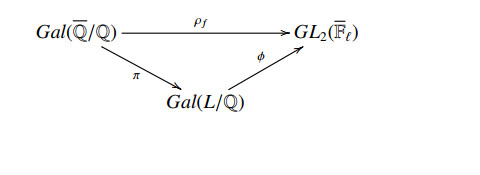
 DownLoad:
DownLoad:

